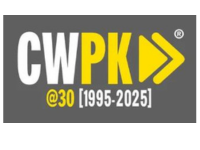There is a statistic that has provided some positive distraction recently, amidst worrying data on the Covid-19 front. Over the weekend, the Pakistan Telecommunication Authority (PTA) reported that the number of broadband subscriptions had surpassed 100 million. On this memorable occasion, congratulations are due to the telecom watchdog and telecom operators. At the same time, it’s critical to put this enormous figure into context.
What exactly do 100 million broadband “subscriptions” imply? According to previous trends, around 97 percent of these subscriptions would fall under mobile broadband (3G and 4G). The number of “unique users” is projected to be lower than subscriptions due to the Multiple-Sim phenomena, in which some consumers use multiple connections. As a result, there will not be 97 million 3G/4G subscriptions available. If every third user has two connections, there are approximately 73 million unique 3G/4G users.
Fixed broadband (mostly DSL internet, Fiber to the Home (FTTH), and Fixed LTE) accounts for the majority of the remaining 3% of the 100 million subscriptions. For a country with 30 million+ households and 3 million+ businesses, only 3 million fixed broadband connections translates to a low density. Policymakers and market forces in Pakistan neglected fixed broadband investments, whether intentionally or unintentionally, despite fixed broadband’s superior speed, reliability, and quality. Failure on this front has already had ramifications for ICT-related businesses that rely on reliable broadband access.
What about the pervasiveness of 3G/4G if fixed broadband is scarce? To be fair to the regulator, material from other official sources also does not offer a rosy image on the mobile broadband front. According to the official Pakistan Social & Living Standards Measurement Survey (2018-19), there is a significant digital gap in Pakistan. Only 34% of homes have access to the Internet, which includes mobile broadband. In the country, only 45 percent of people had a mobile phone.
While 3G and 4G subscriptions have grown significantly, according to the PTA, this is not reflected in Internet usage. According to PSLM, only 17% of people said they had used the Internet in the previous three months. In addition, “overall, 8% of individuals 10 years and older reported using a computer/laptop/tablet in the previous three months, while 5% of respondents reported utilising replacements such as mobile phones, smart phones, and other devices,” according to the PSLM research. When it comes to females and rural areas using ICT devices and services, the statistics are even more alarming. Balochistan has the worst situation.
According to the PTA press release, “87 percent of the country’s population has access to internet/broadband services.” However, given the PSLM numbers, it would be good if the regulator could explain the significant inequalities in Internet usage. On that topic, it would be helpful if the watchdog began collecting and disseminating disaggregated data so that independent academics and stakeholders could better examine broadband adoption and usage across provinces, rural and urban areas, male and female users, and various age groups. This could also help policymakers make smarter decisions.
Source: Brecorder









